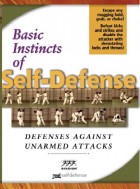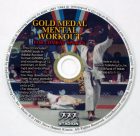Know your enemy’s fighting techniques and tactics or else lose the fight
Another lesson from an old battle…. In the initial clash in the battle for Vienna (1683), a few well-trained German musket regiments were cut nearly by half by lightly armed Tatars. As Jan Pasek relates: Their fiery muskets and even great artillery guns were for naught.
Why? Because the German musketeer infantry had no experience with Tatar tactics, but the Tatars were thoroughly familiar with both the musketeer infantry and dragoons (mounted musketeers). The Tatars were masters of horse, bow, and sabre, but they also knew the range of the musket, the reload times, and the musketeer tactics, so in this contest of bullets against bows and blades, the bows and blades won.
The Lesson
- It is not the more advanced technology, even if supported by state-of-the-art tactics, that wins, but the superior knowledge of both the enemy’s weapons and of one’s own.
- The winner is not the one who has a better weapon, but the one who uses his weapon better.
- Seemingly superior opponents can be defeated if one acts decisively, with well-earned confidence in one’s skill and knowledge of the enemy.
- Decisiveness comes from confidence. Confidence comes from practice.
How does this lesson apply to self-defense in current times? Well, it most obviously applies to gun-versus-knife fights (see self-defense tips number 11 and number 27), and an intelligent reader sees the implications for both sides of such a conflict. Other than that, the lesson applies to any type of weapon, including unarmed fighting. Here is how: Far away and long ago, a group of accomplished combat-sport coaches were asked this question: Who would win a match between fighters from different combat sports? Would it be a boxer, a judoka, a karateka, a wrestler? The coaches gave an insightful answer: The winner will be the fighter who first applies his tactics successfully.
Now, to do that, the fighter better be familiar with the opponent’s techniques and tactics — just as the Tatars were familiar with the musket regiment’s weapons and tactics.
Conclusion
Master your weapons, and know your enemy’s weapons.
If you know the enemy and know yourself, you need not fear the result of a hundred battles. If you know yourself but not the enemy, for every victory gained you will also suffer a defeat. If you know neither the enemy nor yourself, you will succumb in every battle.—Sun Tzu
Next, Self-Defense Tip #44 — Think Like a Commander — How Discipline and Practice Win Battles.
Self-defense tip from Thomas Kurz, co-author of Basic Instincts of Self-Defense and author of Science of Sports Training, Stretching Scientifically, and Flexibility Express.
Self-Defense Moves
For your defense moves to work under stress they must be based on your natural, instinctive reactions, require little strength and limited range of motion, and be proven in fighting experience.To learn how your natural reactions can instantly defeat any unarmed attack, see the video Basic Instincts of Self-Defense.
Defend Against Weapons
To defend against weapons you have to know how they are used. Also — every stick has two ends … the weapon of attack may become a weapon of defense in your hand …To learn how the typical street weapons (club, knife, razor) are used by an experienced streetfighter and how to practice with them, see the video Self-Defense: Tools of Attack — Club, Hatchet, Blackjack, Knife, Straight Razor.
Mental Toughness
Staying cool under pressure is more important for self-defense than being physically fit and technically skilled. If you can’t control your mind what can you control?To learn mental techniques that let you calmly face any threat and act rationally in the heat of a fight, click here.
For a complete list of our products, click here.







